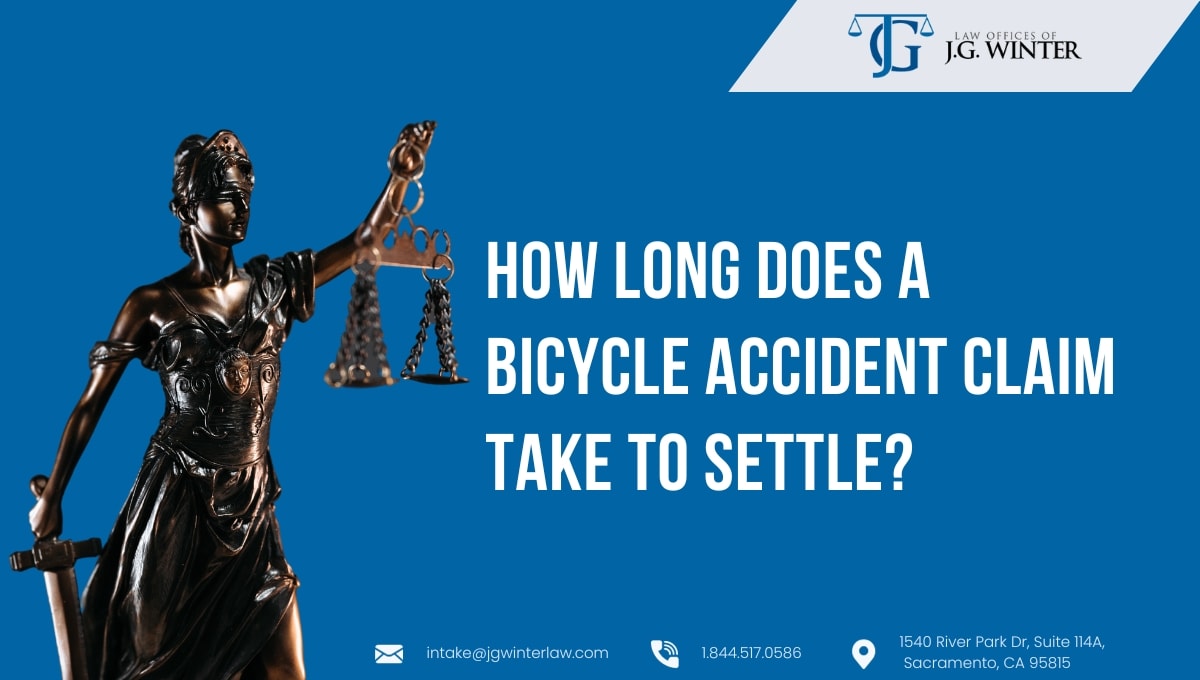Navigating through a bicycle accident claim is filled with complexities and uncertainties, especially regarding the time it takes to reach a settlement. These claims involve a series of steps, each with its own set of variables, from the initial filing and gathering of evidence to the negotiations with insurance companies and possibly, court proceedings.
The duration of the process depends on several factors, such as the specifics of the accident, the extent of injuries involved, and the legal intricacies at play. It makes it difficult to predict a definitive timeline for the settlement of a bicycle accident claim. Understanding the process, with its potential twists and turns, is crucial for anyone seeking compensation following a bicycle accident.
Factors influencing the timeline of a bicycle accident claim
Several factors can affect how long it takes to settle a bicycle accident claim. Understanding these can provide a clearer expectation of the timeline involved.
- Severity of injuries: More severe injuries often require longer treatment and recovery periods, affecting the claim duration. The time needed for a full medical assessment can delay settlement negotiations as it determines the extent of compensation required.
- Legal complexities: Cases with unclear liability, multiple parties involved, or unique legal issues can take longer to resolve. Navigating these complexities, including gathering evidence and legal arguments, adds time to the settlement process.
- Insurance company involvement: The procedures and policies of insurance companies vary. Their response times, willingness to negotiate, and the complexity of claims processing can all impact the duration of the claim.
- Negotiation process: The willingness of both parties to negotiate and reach an agreement plays a significant role. Amicable negotiations can lead to quicker settlements, while disputes or unwillingness to compromise can extend the process.
- Court proceedings: If a claim goes to trial, the timeline extends significantly. Court schedules, hearings, and potential appeals add considerable time to the settlement process.
The phases of a bicycle accident claim
A bicycle accident claim involves several distinct phases, each playing a crucial role in the journey toward a resolution. Understanding these stages helps in preparing for the process ahead.
Initial consultation and case building
The process begins with an initial consultation with a bicycle accident lawyer, where you discuss the accident details and potential claim. Your attorney then starts building your case. It involves gathering evidence, medical records, and any other pertinent information that establishes the grounds for your claim.
Filing the claim
The next step is officially filing the claim. It involves preparing and submitting the necessary legal documents to the appropriate parties, such as the at-fault driver’s insurance company. The claim outlines your injuries, damages, and the compensation sought.
Discovery and investigation
During the discovery phase, both sides exchange information and evidence. The process may include depositions, requests for documents, and interrogatories. The investigation part is crucial for uncovering additional evidence to strengthen your case.
Negotiation and settlement offers
Negotiation is a pivotal phase where the involved parties discuss potential settlements. Your attorney negotiates with the insurance company or the defendant’s lawyers to reach an agreement on the compensation amount that covers all your damages.
Trial preparation and trial (if necessary)
If negotiations don’t lead to a settlement, the case may proceed to trial. Trial preparation involves strategizing, gathering expert testimonies, and preparing for court presentations. The trial phase is where the case is argued before a judge or jury, who then delivers a verdict
Settling vs going to trial: What impacts the decision?
Deciding between settling and going to trial in a bicycle accident case depends on several factors, including the speed of resolution, potential compensation, and personal preferences. Settling can lead to a quicker, more certain conclusion, often with less stress and lower costs. Trials, while lengthier and more unpredictable, can potentially yield higher compensation, especially in complex cases where liability isn’t clear or settlement offers are too low. Various factors, including the strength of the evidence and negotiation outcomes, influence the decision. Each path has its merits and challenges, making it crucial to weigh the options carefully.
The role of legal representation in the settlement time

A skilled bicycle accident attorney can significantly influence both the timeline and the outcome of a claim. Their expertise in navigating the legal system, understanding the intricacies of personal injury law, and experience with insurance companies can expedite the process. They can efficiently handle case-building, evidence gathering, and negotiation phases, potentially speeding up the settlement process.
Moreover, an attorney can adeptly assess when it’s beneficial to settle or proceed to trial, providing strategic advice based on the specifics of the case. Legal representation also offers the advantage of reducing the burden on the claimant, allowing them to focus on recovery while the attorney handles the complexities of the claim.
Managing expectations: What claimants should know
Managing expectations for claimants in bicycle accident cases is crucial. It’s important to understand that these cases can vary greatly in duration and outcome. Patience is key, as some cases may resolve quickly, while others, especially those involving severe injuries or complex legal issues, may take longer. Being mentally prepared for potential delays and challenges can help maintain a level-headed approach throughout the process.
It’s also wise to be realistic about compensation. While legal representation aims to secure the maximum possible settlement, various factors such as available evidence, the degree of negligence, and insurance policy limits, can influence the final amount. Open communication with your attorney about your expectations and concerns can provide clarity and help set achievable goals. Remember, the legal process is intricate and sometimes slow-moving, but thoroughness can yield the most favorable outcomes.
Conclusion
Navigating a bicycle accident claim involves understanding various factors and phases, from the complexities that influence the timeline to the critical decision of settling versus going to trial. Each case is unique, and the severity of injuries, legal challenges, and the strategic decisions made during the process impact it.
A seasoned bicycle accident attorney can guide you through the complexities and significantly influence the outcome of your claim. J.G. Winter Law brings a wealth of experience in bicycle accident cases, ensuring that every aspect of your case is handled with the utmost care and professionalism. We are committed to advocating for your rights, aiming to secure the best possible outcome for you. Contact us today and make us your steadfast ally in securing the compensation you deserve.
FAQs
Can I still file a claim if I was partially at fault?
You can still file a claim even if you were partially at fault. California follows a comparative negligence rule, where you can recover damages minus your percentage of fault. However, the compensation you receive will be reduced by your share of the blame for the accident.
How is compensation calculated in bicycle accident cases?
Compensation in bicycle accident cases is calculated based on several factors, including medical expenses, lost wages, pain and suffering, and property damage. Future medical costs and loss of earning capacity are also considered. Each case varies, so the exact compensation amount depends on the specific circumstances and impact of the accident.
How long after a bicycle accident can I file a lawsuit?
In California, the statute of limitations for filing a personal injury lawsuit, including bicycle accidents, is two years from the date of the accident. Initiating legal proceedings within this timeframe is crucial; otherwise, you risk losing your right to claim compensation for your injuries and damages.
How long does compensation take to pay out?
Compensation payout in a bicycle accident claim can typically take a few months to a year after a settlement or court verdict. However, the exact timeline can vary based on case complexity and negotiation outcomes.
How long after an accident can you get compensation?
You can receive compensation after a bicycle accident once your claim is settled or a court verdict is reached. The process can take anywhere from several months to over a year, depending on the specifics of your case.




